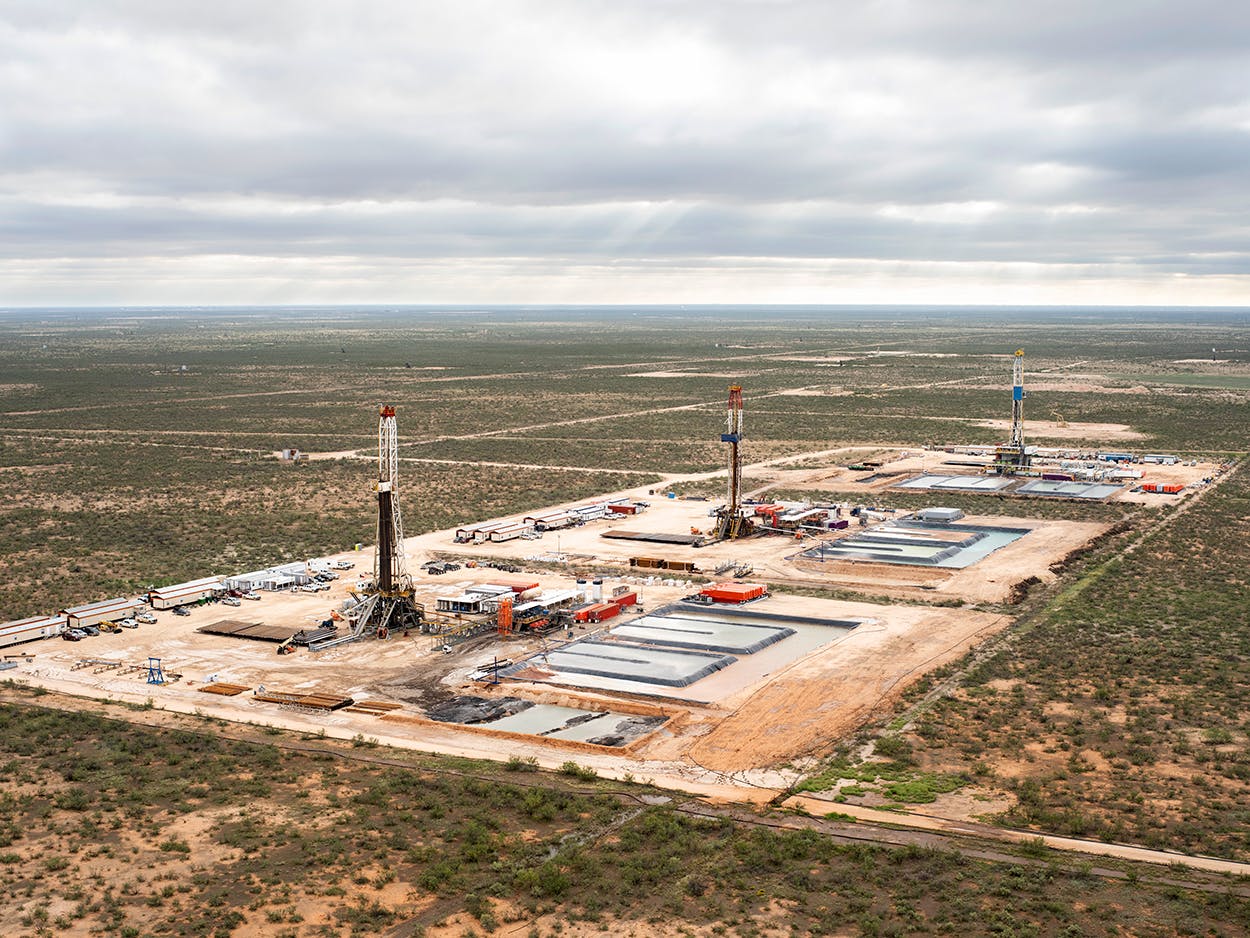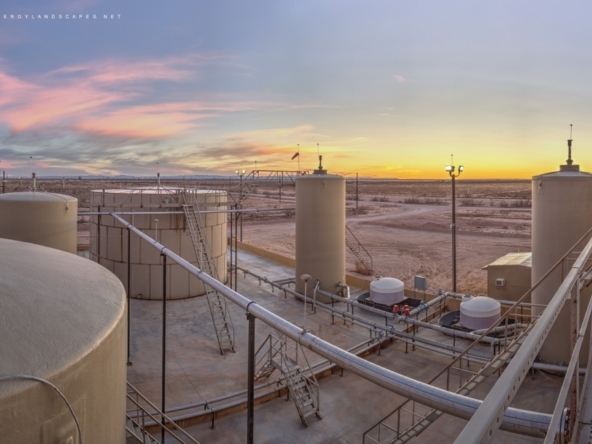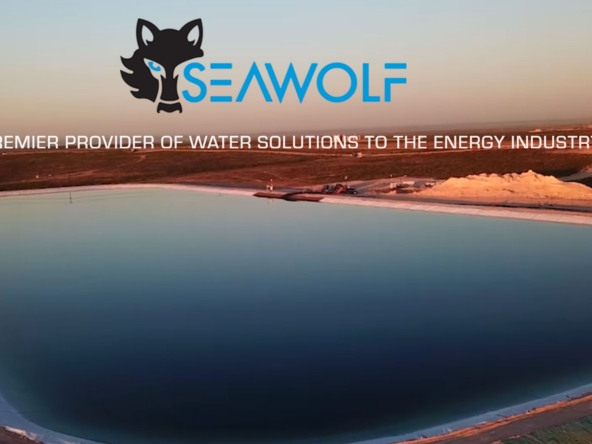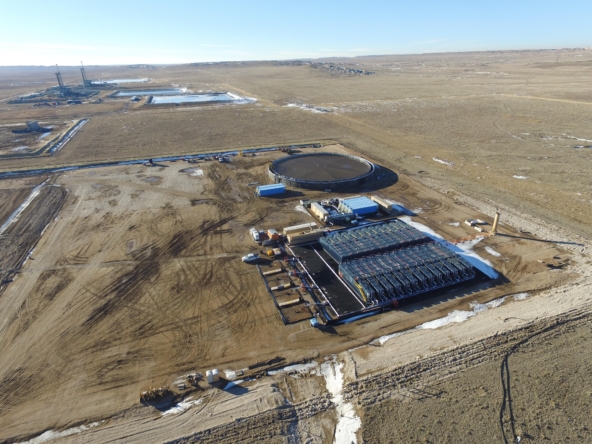IHS Markit recently estimated the US oilfield water management market to now be valued somewhere around $37.5 billion. That represents a 12% year-on-year market growth from 2018—mainly driven by water disposal and water hauling. On our recent podcast, our experts Paola Perez Pena and Prescott Roach give us an overview the market, including how the Permian Basin plays a part. Listen to the full podcast.
Jessica Nelson:
Paola, can you put that $37.5 billion in perspective for us and provide an overview of the water management market?
Paola Perez Pena:
Our valuation is the result of the analysis of the whole value chain of the market. We have multiple segments and each of them behave and contribute differently to our estimation of the market value. From our valuation, hauling and disposal of water account for 65% of total spending in this year. These two segments are becoming more critical for oil and gas operations in the US, as we produce five times more water than oil. The remaining spending comes from segments such as sourcing, water treatment and flow back services. As more water gets reused, we expect water treatment spending to increase while sourcing spending to decrease.
The reason why hauling and disposal are so relevant is because these segments manage 90% of the water use in the oilfield. The more wells we drill with longer laterals, the more water these segments will need to manage. Let me give you some numbers so I put this in perspective. We talk about flow back water. This water has increased more than 24% in the last couple of years, mainly driven by Permian activity. That’s quite a drastic increase just for flow back water.
Now, if we add produced water, we expect to produced water to increase 4% this year and continue this trend in the next five years as we move from core regions to more water saturated areas.
Hill Vaden:
Paola, is the flow back water…you said 4%?
Paola Perez Pena:
The flow back water is actually 24% increase in the past couple of years because we’ve been drilling longer laterals. Per well, we need more water and that’s what it has driven this dramatically increase in the flow back water.
Hill Vaden:
Okay, so that’s the water coming back from the water brought into the completion job as opposed to formation water.
Paola Perez Pena:
Exactly.
Hill Vaden:
Okay, but the formation water, I think you were saying, was a much larger contributor to the overall water challenge.
Paola Perez Pena:
Exactly. It is actually, the produced water. Let me give you numbers actually. We’re expecting this year to have just in produced water, 19 billion barrels of water. That is, if you put it in perspective for those that are familiar with the Houston area, is almost four times all the water in the Lake Conroe. That is a lot of water that we’re just going to produce from oil and gas industry.
Hill Vaden:
All from the Permian or across North America?
Paola Perez Pena:
Yeah. It’s just a lot of water. Let me clarify here. These numbers are for the US. The flow back water increase is an overall number of the US, as well as the produced water.
Hill Vaden:
Is that inclusive of offshore?
Paola Perez Pena:
It is onshore unconventionals.
Hill Vaden:
Onshore US, okay, great.
Paola Perez Pena:
Yes, thanks for clarifying that. The way the industry is managing this water is pretty much 40% is used for EOR injections, 50% goes into salt water disposals, and the remaining volumes get recycled. As produced water increases in the next couple of years, we expect to see more water being recycled and more technologies coming into the industry. However, we still believe that salt water disposal will continue to be the primary method of injection due to economics. It’s very cheap for operators to just go and dispose the water using salt water disposal. We see this continuing in the next couple of years.
Hill Vaden:
How does that compare to prior years? Is that, with the economics of saltwater disposal so attractive, is recycling kind of flat at 10%?
Paola Perez Pena:
No, recycling has increased definitely. If we look at three years ago, we were seeing like just maybe 2 or 3%, very, very little recycling, and all coming from the Marcellus Shale, just because there is not a lot of disposal wells in Marcellus and Utica. They were forced to recycle water. But, then as we produce more water and the industry sees a need for an increase in recycling due to limitations in sourcing, so this recycling is increasing, right? It’s increasing also because new technologies are coming into the market and prices are going down for some operators. These trends that we’ve seen in the past year, we expect to continue going. We’re talking about going from 10 to maybe 20% in the next 5 years. This is our estimation. I’ve heard some people in the industry saying 50% in the next 5 years, which I think is a little optimistic, but we never know.
Maybe there’s some new technologies coming into the market and really dropping those prices. We’ll see what happens, but it will mainly depend on the technology development and how the cost decreases and are more competitive compared to disposal economics.
Jessica Nelson:
You went through quite a few numbers there, and maybe I missed it. Where’s the biggest chunk of the water expenses? Is it disposal? Is it hauling of the water? You said it was cheaper than the recycling at this point, but where is that expense coming from?
Paola Perez Pena:
The biggest chunk is definitely coming from hauling. We have multiple segments in the market, right? We have the disposal, we have the recycling. Then, we also have kind of like the logistics – and hauling goes into the logistics section. If you compare hauling and disposal, the main two segments from the whole market, definitely hauling is the biggest chunk of the water expense, because it accounts for around a third of the total spending in water management. We estimate that around 10 billion of water will be transported in the US via truck. This is just a lot of water that is going to need a lot of logistics and is going to be very challenging in terms of cost, which is as more trucks are needed per well, the costs are increasing. This is why the big chunk of spending is there, just because the demand for trucks is increasing and trucking in general is just expensive compared to just transporting water via pipeline.
Jessica Nelson:
Are there similar constraints? I know we’ve heard over the past few months about supply constraints coming out of the Permian in particular. So, mentioning this hauling demand, is that a constraint that you’re seeing also?
Paola Perez Pena:
The Permian had constraints in pipeline just for oil production. We do see there’s definitely need for infrastructure in the Permian. This is mainly due to the fact that we need to reduce costs. If we have more pipelines to transport the water, the costs are definitely going to decrease. There is definitely a need for that, but so far the industry is using trucks most of the time. It’s just a mix. If you think about what is happening this particular year, where operators are being more cautious with their capex, I don’t see a lot of investment going into a pipeline. It’s needed to reduce cost. If operators don’t decide to put the capex towards that and prioritize water, then we’ll have to keep using trucks and just like getting those costs increasing as there is more demand.
Hill Vaden:
Is the lack of investment…is it just not the economics, it’s not that big of a contributor negatively to the economics to really prioritize it in the way that other investments are going?
Paola Perez Pena:
That’s a good question. I’m not sure how much the cost has to increase to make it relevant into the economics. I’m pretty sure the operators have these numbers in their analysis, but what I’ve seen is few operators announcing they want to invest in pipelines, but mainly like a water specialist or third-party companies are more inclined to do that. That makes me think that the operators are not as worried with the increase due to water transportation as of today.
Prescott Roach:
Just as a general rule of thumb on that, the economics of moving water by a truck or by pipeline do differ quite a bit. Just very approximately speaking, to ship produced water via a pipeline once you’ve already built it out tends to cost somewhere in the neighborhood of around 30 to maybe 60 cents per barrel of water, whereas shipping it on a truck might cost us somewhere in the neighborhood of about $3 or so.
Hill Vaden:
Wow.
Prescott Roach:
The difference between those two is definitely substantial, but in terms of operators determining how they’re going to allocate their capex, it may just not be a big enough difference for them to justify spending during a time of capital restraint.
Posted 8 August 2019
This excerpt has been professionally transcribed as accurately as possible. Please note, some words and phrases may have been unintentionally excluded.



